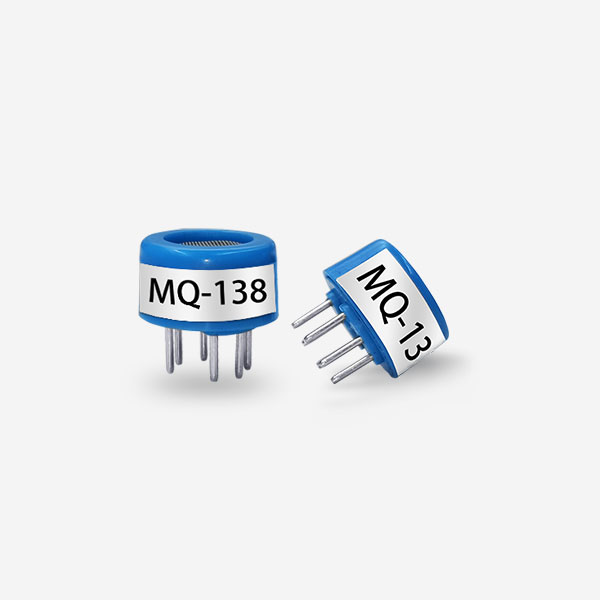Air pollution has become a major global concern due to its detrimental effects on human health and the environment. It is estimated that around 9 out of 10 people worldwide breathe polluted air, which contributes to various respiratory diseases, cardiovascular problems, and even premature death. To address this pressing issue, accurate monitoring of air quality is essential. In recent years, gas sensor technology has emerged as a powerful tool for monitoring air pollutants, enabling us to unveil the invisible threats lurking in our atmosphere. This article will explore the advancements in gas sensor technology and its applications in air quality monitoring.

Understanding Gas Sensor Technology:
Gas sensors are devices that detect and measure the presence of specific gases in the surrounding environment. They work on the principle of chemical reactions between the target gas and the sensing material within the sensor. When the target gas interacts with the sensing material, it triggers a physical or chemical change that can be detected and quantified, providing valuable information about the gas concentration.
Advancements in Gas Sensor Technology:
- Miniaturization and Portability: One significant advancement in gas sensor technology is the miniaturization of sensors, making them more portable and versatile. Traditional air quality monitoring systems relied on large, stationary equipment, limiting their deployment options. However, miniaturized gas sensors now allow for easy integration into wearable devices, mobile phones, drones, and Internet of Things (IoT) platforms. This enables real-time, on-the-go monitoring of air quality in various settings.
- Selectivity and Sensitivity: Gas sensors have become more selective and sensitive, allowing for the detection of specific gases at very low concentrations. Advanced sensor materials and designs ensure minimal interference from other gases present in the atmosphere, resulting in highly accurate measurements. This selectivity and sensitivity enable the identification and quantification of multiple pollutants simultaneously, providing a comprehensive picture of air quality.
- Smart Data Processing: With the advent of big data and artificial intelligence (AI), gas sensor technology has also evolved in terms of data processing capabilities. Real-time data collected from sensors can be analyzed using AI algorithms to identify patterns, trends, and correlations between air quality and various factors such as weather conditions, traffic, or industrial activities. This analytical power helps in understanding the sources and dynamics of air pollution, aiding in the formulation of effective mitigation strategies.
Applications in Air Quality Monitoring:
- Urban Air Pollution Monitoring: Gas sensor technology plays a crucial role in monitoring air quality in urban environments, where pollution levels are often highest due to vehicular emissions, industrial activities, and dense populations. By deploying an array of gas sensors across a city, policymakers and environmental agencies can obtain real-time information about pollutant levels, map pollution hotspots, and make informed decisions regarding traffic management, zoning regulations, and emission control measures.
- Indoor Air Quality Assessment: Indoor air pollution is another significant concern, as people spend a significant amount of time indoors, especially in residential and office settings. Gas sensors can be used to monitor gases like carbon dioxide (CO2), volatile organic compounds (VOCs), and formaldehyde, which are commonly found indoors due to building materials, furniture, and cleaning products. Continuous monitoring ensures a healthy indoor environment and helps identify potential sources of pollution for remediation.
- Industrial Emission Monitoring: Gas sensors are crucial in monitoring and controlling industrial emissions, ensuring compliance with environmental regulations. By installing gas sensors near industrial facilities, the real-time measurement of pollutants such as sulfur dioxide (SO2), nitrogen oxides (NOx), and particulate matter (PM) can be achieved. This facilitates prompt action and enables industries to optimize their processes to minimize pollution.
- Personal Exposure Monitoring: Wearable gas sensors provide individuals with the ability to monitor their personal exposure to pollutants. These devices can be integrated into accessories like wristbands or badges, allowing users to track their exposure levels in different environments. Personal exposure data can empower individuals to make informed decisions about their activities and protect themselves from harmful pollutants.
Challenges and Future Directions:
While gas sensor technology has made significant progress, there are still challenges to overcome. Sensor calibration, long-term stability, cross-sensitivity, and cost-effectiveness are areas that require continuous improvement. Additionally, expanding the range of detectable gases and improving the durability of sensors in harsh environments remain important research areas.
Looking ahead, the future of gas sensor technology in air quality monitoring is promising. Advancements in nanomaterials, machine learning, and wireless communication will further enhance sensor performance and connectivity. Integration with smart city initiatives and IoT platforms will enable comprehensive monitoring networks for better decision-making. Moreover, increased public awareness and partnerships among researchers, policymakers, and industries will facilitate the widespread adoption of gas sensor technology to improve air quality worldwide.
Conclusion:
Gas sensor technology has revolutionized air quality monitoring, allowing us to unveil the invisible threats posed by air pollution. Through advancements in miniaturization, selectivity, and data processing capabilities, gas sensors provide accurate and real-time measurements of air pollutants. Their applications span from urban environments to indoor spaces, industrial facilities, and personal exposure monitoring. Overcoming existing challenges and embracing future opportunities will ensure the continued development and utilization of gas sensor technology in our collective efforts to safeguard human health and protect the environment from the perils of air pollution.
 : +86 155 8830 2704
: +86 155 8830 2704 : jxdziot@gmail.com
: jxdziot@gmail.com
